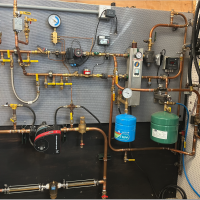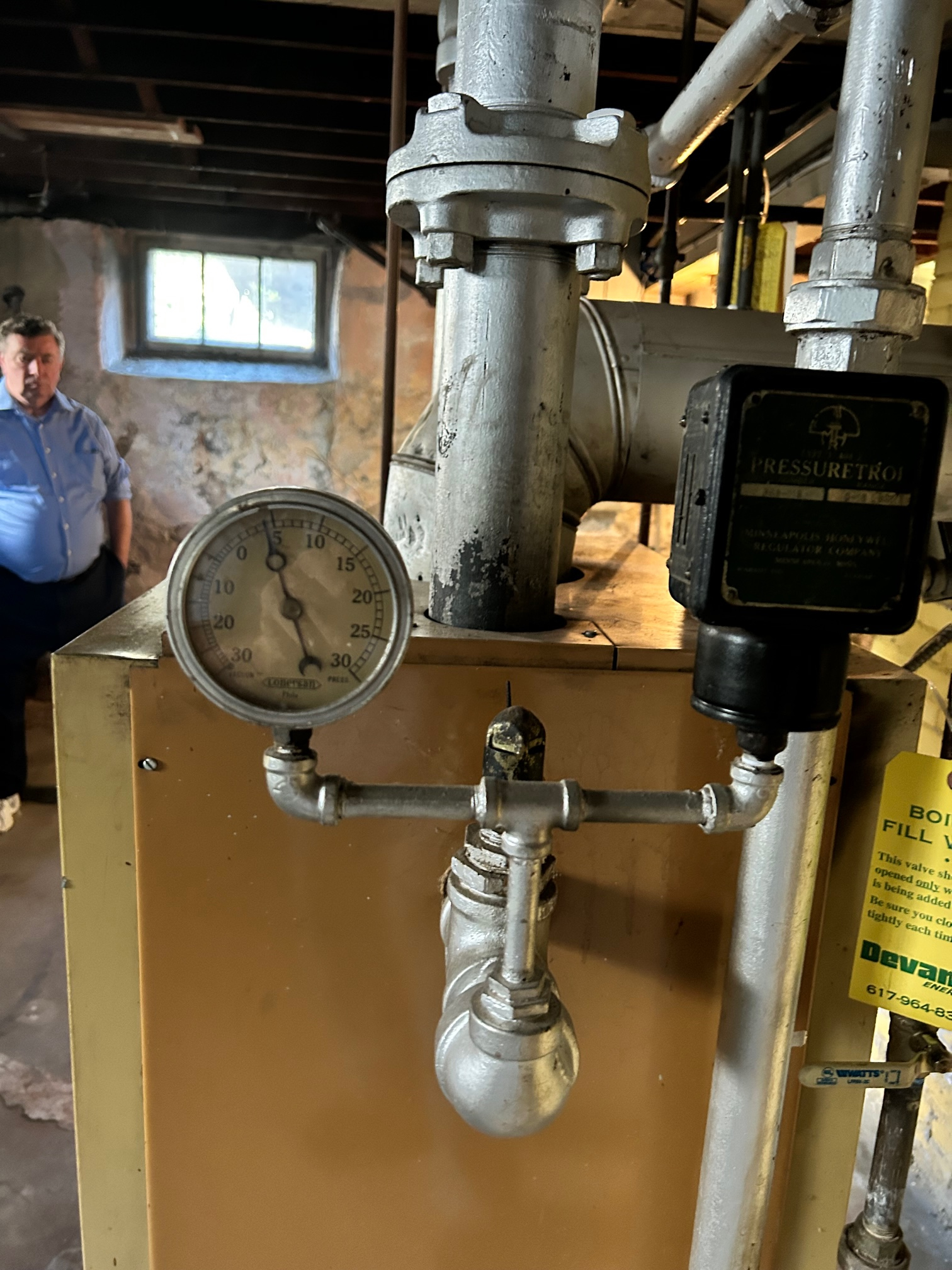Welcome! Here are the website rules, as well as some tips for using this forum.
Need to contact us? Visit https://heatinghelp.com/contact-us/.
Click here to Find a Contractor in your area.
Best Of
Re: The Legacy of the Dead Men
Amen...I revere these men...they created and improved 👏..Brilliant and dogged! Mad Dog 🐕
Re: Replace low hanging black steel pipes with Pex tubing in homerun config to radiators?
Great looking install. I like seeing the steel piping painted.
Grazie for the Caleffi parts.
Grazie for the Caleffi parts.
 hot_rod
hot_rod
1
Re: Oil Tank Piping
Water will be trapped in tank in top draw or side tap configurations. It can drain out in bottom draw assuming the tank is pitched per code. Outside tanks collect more water than inside, hence the code change. BTW, I am on NFPA31 committee currently but was not in 2020 when this was writtenEBEBRATT-Ed said:So the way I read 7.8.7 is if you come off the bottom you don't need secondary containment. If you come off the top or side you do?? Am I reading this right? It makes no sense to me that secondary containment is not needed coming off the bottom but is on the side or the top. Tell me if I am not reading it right. And why the requirement for secondary containment outside but not in a basement? I understand no one here wrote the code. Just looking for the reason.
Re: Old Steam System worth Keeping? Best options to replace?
I have restored or rehabbed a number of old or historic houses in the last 40 years and consulted on many others. I know of many houses where the person starting the rehab removed ALL of the radiators and steam or hot water piping. Modernizing was the rationale. Not one single one of those houses has a successful, comfortable environment as a result of a new forced air system. Of those in which the rehabber still lives in the house, they all regret their decision.
All through central heating history, cast iron radiant heat, whether steam or hot water, was the premium type of heating. Movement away from cast iron was almost entirely based on economy of installation, not performance or efficiency.
@Jamie Hall and @Steamhead Have given you the best and most complete recommendations and I totally agree with them, no point on restating it.
All through central heating history, cast iron radiant heat, whether steam or hot water, was the premium type of heating. Movement away from cast iron was almost entirely based on economy of installation, not performance or efficiency.
@Jamie Hall and @Steamhead Have given you the best and most complete recommendations and I totally agree with them, no point on restating it.
Re: Old Steam System worth Keeping? Best options to replace?
The easiest, cheapest and simplest approach is @ScottSecor 's. Replace the boiler with a nice new properly sized gas fired one, remove the radiators and refinish the floors, and reinstall the radiators with new inlet valves. You could probably repair the old valves as well -- they are very simple to bring up to like new condition unless they have really been hammered, and that saves the trouble of removing the old valves and their connections to the radiators.
Problem is, installing the new boiler takes a competent steam person, and the only one in your area I'm really happy with is Ryan at @New England SteamWorks -- but I daresay he's just a bit busy. No harm to contacting him, though. If you are west of Boston, you might also try @Charlie from wmass in Springfield, but I know he's about as busy as he can be, too, and doesn't work -- to my knowledge anyway -- in Boston itself.
If the boiler actually runs, though, you can do the radiators part of the job now without doing the boiler at the same time.
I can't completely agree with @Hot_water_fan on this one. There is indeed something to be said for a heat pump and air conditioning -- but installing adequate ductwork in an old Boston area building is going to be a horrible job and quite disruptive -- and permanently so, unless you like the industrial look...
Problem is, installing the new boiler takes a competent steam person, and the only one in your area I'm really happy with is Ryan at @New England SteamWorks -- but I daresay he's just a bit busy. No harm to contacting him, though. If you are west of Boston, you might also try @Charlie from wmass in Springfield, but I know he's about as busy as he can be, too, and doesn't work -- to my knowledge anyway -- in Boston itself.
If the boiler actually runs, though, you can do the radiators part of the job now without doing the boiler at the same time.
I can't completely agree with @Hot_water_fan on this one. There is indeed something to be said for a heat pump and air conditioning -- but installing adequate ductwork in an old Boston area building is going to be a horrible job and quite disruptive -- and permanently so, unless you like the industrial look...
Old Steam System worth Keeping? Best options to replace?
I just bought a home in Boston, MA built in 1925 which has an oil based steam heating system. It has several leaks at the radiators that have caused damage to the floors. It appears that most of the major part belong to the original system. The burner head is less than 20 years old. We have Nat. Gas at the curb as an option. What are the recommended options for this system? Repair, Replace, Etc. Would a new system be more efficient for such an old house?
Thank you for your comments.




Thank you for your comments.




 jguinta
jguinta
1
Re: Replace low hanging black steel pipes with Pex tubing in homerun config to radiators?
In addition to picking up more user friendly basement space.
A home run system could provide room by room zoning with TRV or actuators on the manifold. A 37W ECM circ would cut power and probably heating costs by zoning the system.
With a mod con you could ship the mix valve shown in this example.
Just saying.
A home run system could provide room by room zoning with TRV or actuators on the manifold. A 37W ECM circ would cut power and probably heating costs by zoning the system.
With a mod con you could ship the mix valve shown in this example.
Just saying.
 hot_rod
hot_rod
1
Re: How to fix this mono flow rad? (FIXED)
@EBEBRATT-Ed, I actually selected the NO STOP coupling for this on purpose Turn the tee 90°. Slide the coupling past the pipe end, then turn the rest of the 90° and align the pipes, then slip the coupling back over the cut. Press away. but from the looks of that location, it is a tight fit for the press tool.
Turn the tee 90°. Slide the coupling past the pipe end, then turn the rest of the 90° and align the pipes, then slip the coupling back over the cut. Press away. but from the looks of that location, it is a tight fit for the press tool.
 Turn the tee 90°. Slide the coupling past the pipe end, then turn the rest of the 90° and align the pipes, then slip the coupling back over the cut. Press away. but from the looks of that location, it is a tight fit for the press tool.
Turn the tee 90°. Slide the coupling past the pipe end, then turn the rest of the 90° and align the pipes, then slip the coupling back over the cut. Press away. but from the looks of that location, it is a tight fit for the press tool. Re: Pressuretrol and low pressure gauge
@Jamie Hall , this is very insightful. Thank you
Re: This boiler is pushing 65......
@ mad dog2; I am pushing way past 65 and still going kind of strong. St Pauls Catholic Church in Butler, Pa had 2 H B Smith steam boilers that were over 100 years old when they were replaced.




